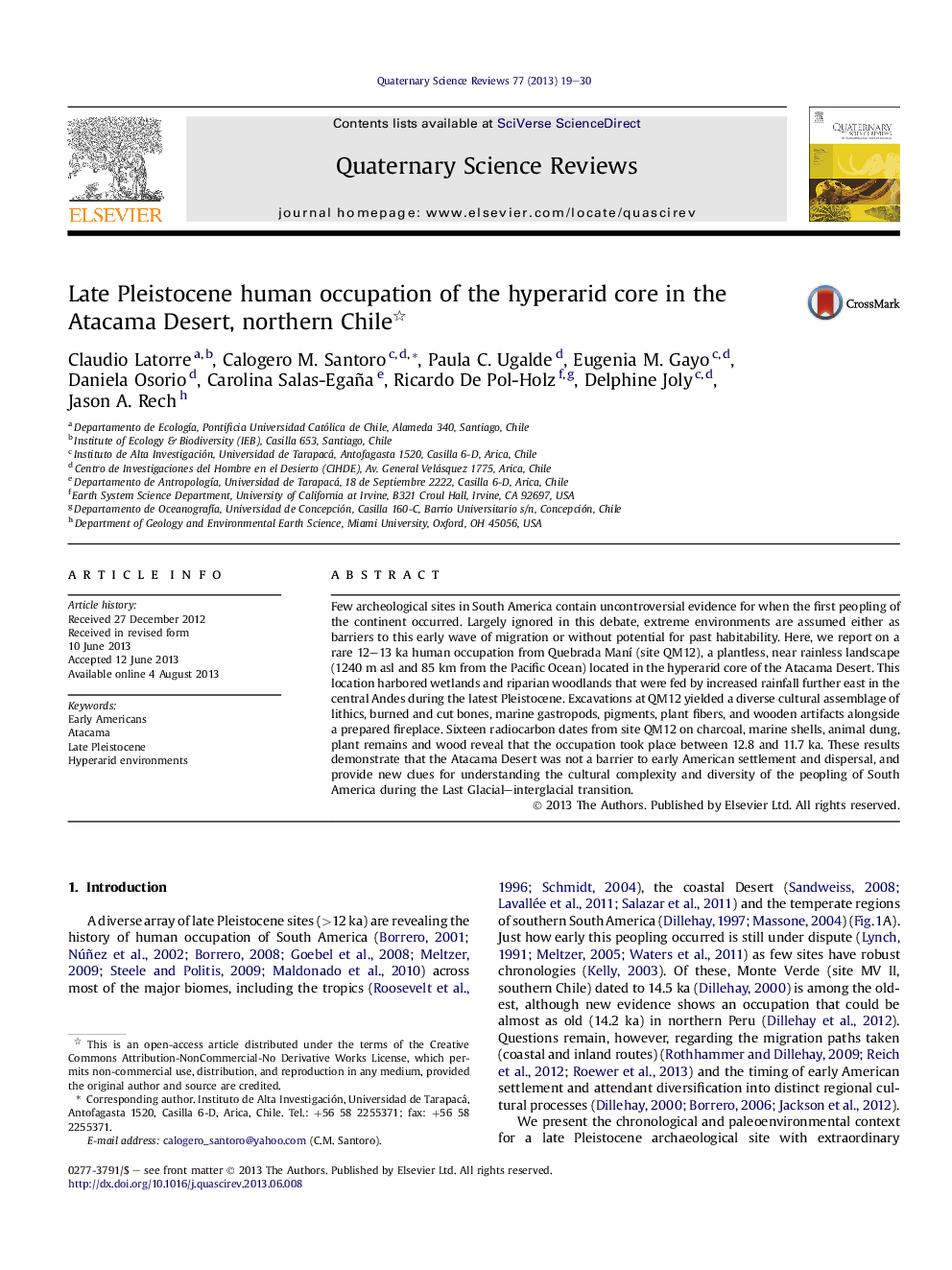| Article ID | Journal | Published Year | Pages | File Type |
|---|---|---|---|---|
| 6446542 | Quaternary Science Reviews | 2013 | 12 Pages |
Abstract
Few archeological sites in South America contain uncontroversial evidence for when the first peopling of the continent occurred. Largely ignored in this debate, extreme environments are assumed either as barriers to this early wave of migration or without potential for past habitability. Here, we report on a rare 12-13 ka human occupation from Quebrada Manà (site QM12), a plantless, near rainless landscape (1240 m asl and 85 km from the Pacific Ocean) located in the hyperarid core of the Atacama Desert. This location harbored wetlands and riparian woodlands that were fed by increased rainfall further east in the central Andes during the latest Pleistocene. Excavations at QM12 yielded a diverse cultural assemblage of lithics, burned and cut bones, marine gastropods, pigments, plant fibers, and wooden artifacts alongside a prepared fireplace. Sixteen radiocarbon dates from site QM12 on charcoal, marine shells, animal dung, plant remains and wood reveal that the occupation took place between 12.8 and 11.7 ka. These results demonstrate that the Atacama Desert was not a barrier to early American settlement and dispersal, and provide new clues for understanding the cultural complexity and diversity of the peopling of South America during the Last Glacial-interglacial transition.
Keywords
Related Topics
Physical Sciences and Engineering
Earth and Planetary Sciences
Geology
Authors
Claudio Latorre, Calogero M. Santoro, Paula C. Ugalde, Eugenia M. Gayo, Daniela Osorio, Carolina Salas-Egaña, Ricardo De Pol-Holz, Delphine Joly, Jason A. Rech,
